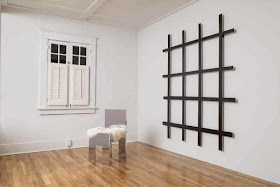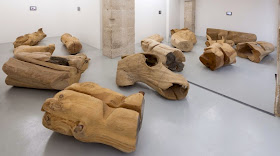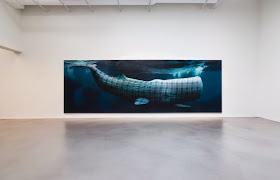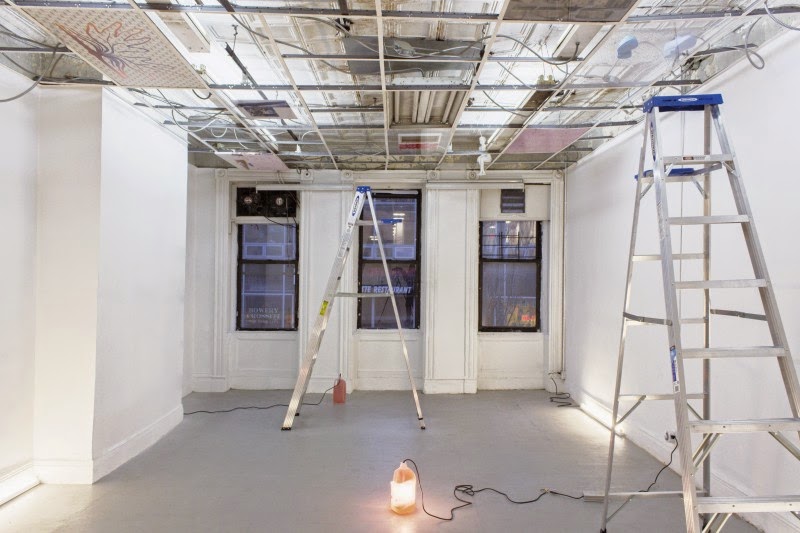
(
Frances Scholz at Tif Sigfrids)
You can cheer yourself with donuts and coffee between each, but the rising regret of a days visiting galleries in Los Angeles is, like summer heat, slowly oppressive, omnipresent. You’ve never felt stupider in your decision, driving ten minutes between each to look for parking at each, turning off the car, getting out, feeding a meter with the prediction of how interesting the exhibition will actually be, and walking into the space where everyone looks incredulous at your having shown up. Every desk jockey’s eye implicitly asking the question of “don’t you know its beautiful outside.” It is beautiful outside, and you have to reassure yourself your interest in art is real and just and there is a brief standoff between you and the gallerist as to whether you will stay or just be a normal person and leave but you win and the jockey's body, creaky from attunement to semio-labor and not the physical one of having to get up to turn a knob, gets up and turns on the sound to the projector and returns to their desk behind a wall to resume conversation. You can tell how important they think you are by how lewd the gossip remains. Because everyone in L.A. knows everyone else, and since they don’t know you, its assumed you don’t know anyone. So the conversation is lewd. And since you don’t know anyone there is no way you could be interested in this, your attendance can only be rationalized as an accident and heads in disbelief erupt from behind the wall every 2 minutes later, in wait to to turn the sound off once again, expecations for the mistaken viewer to leave. Heads not even waiting the length of even one trailer. 4 times in 10 minutes the heads peek like whack-a-mole, but where I, the viewer, am the mole, and the disembodied moles attempt shooing their voyeur away. Disbelieving in an ability to maintain interest, to watch all 10 minutes 16 seconds of video.
And as if to prove them right it shows up online, they have the world on computers now.
The trailers are interesting. A perfect distending form of art, the film trailers purpose to give jist of what the thing is “about,” giving each bit of film, each fragment, a projectable potential into its larger arc continually guessed at over the length of its viewing. In this way the form itself is the lure in which one already understand the rules and assumptions of its form and anything placed into it will assume a certain type of viewing. It gives the nonsensical mess a structure which make it appear to make some sense as potential. You can throw whatever into it, adding more and more, and it will self organize by the cultural assumptions which precede it. Paul Giamatti helps too.













































.jpg)
.jpg)

